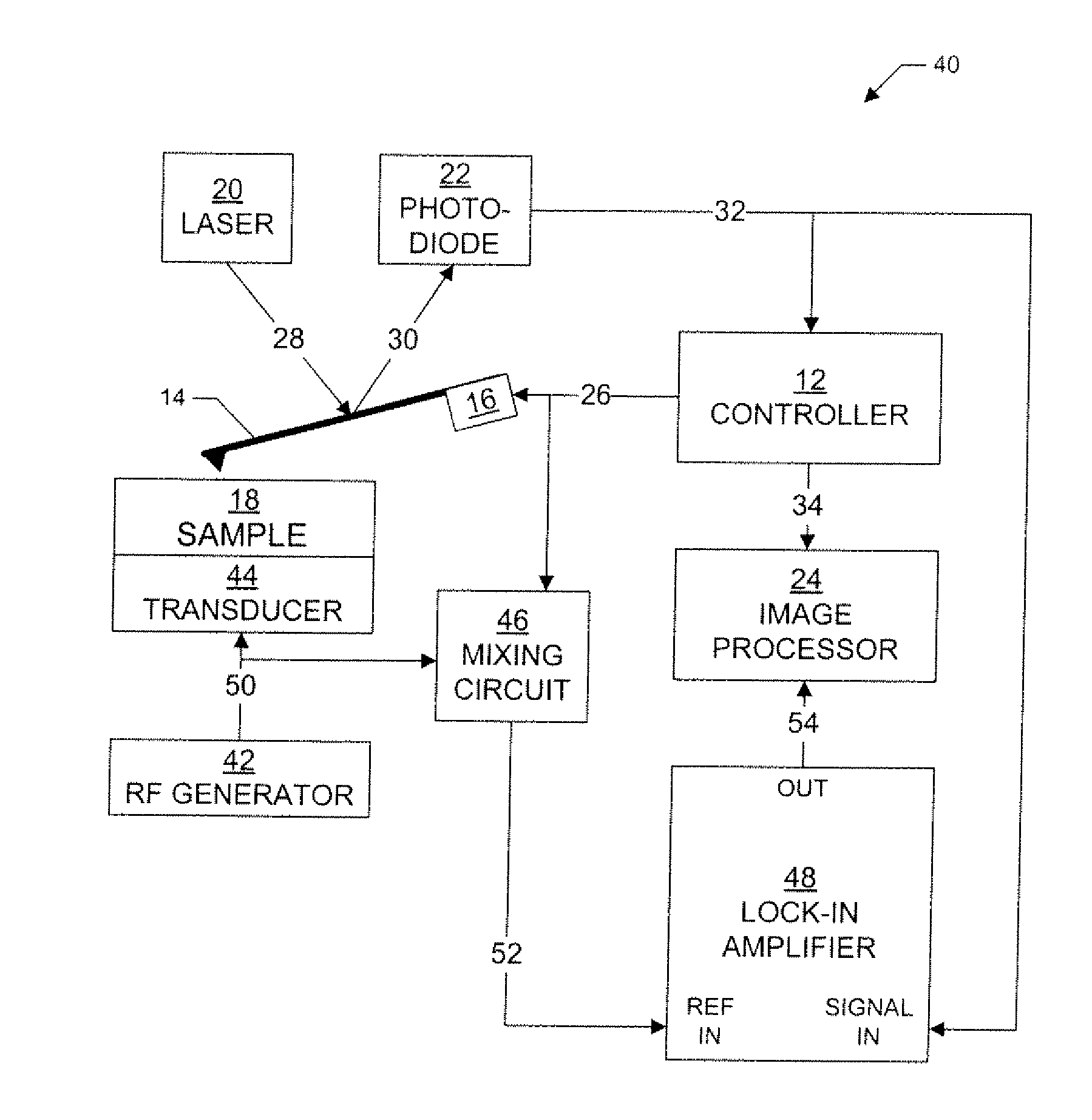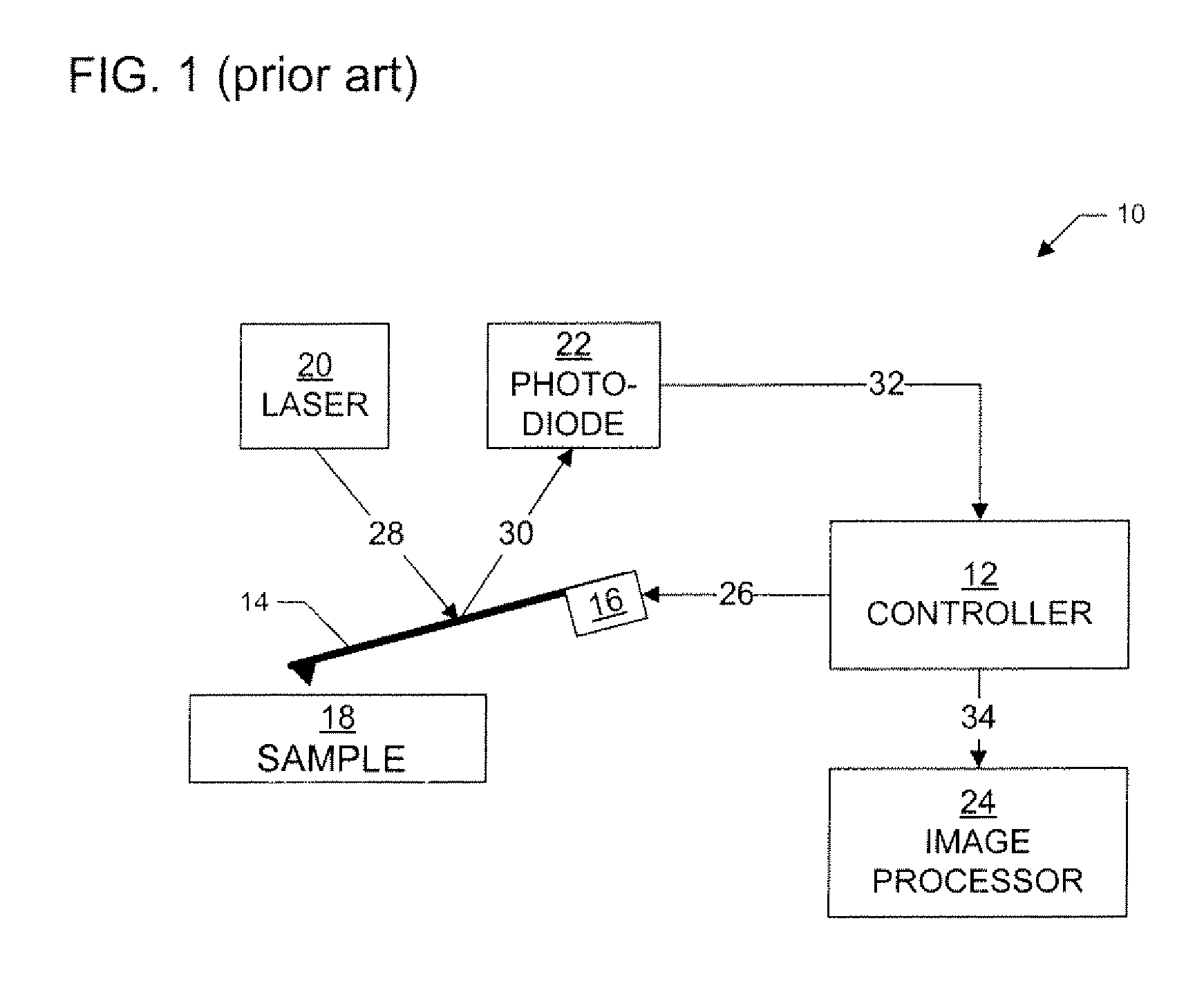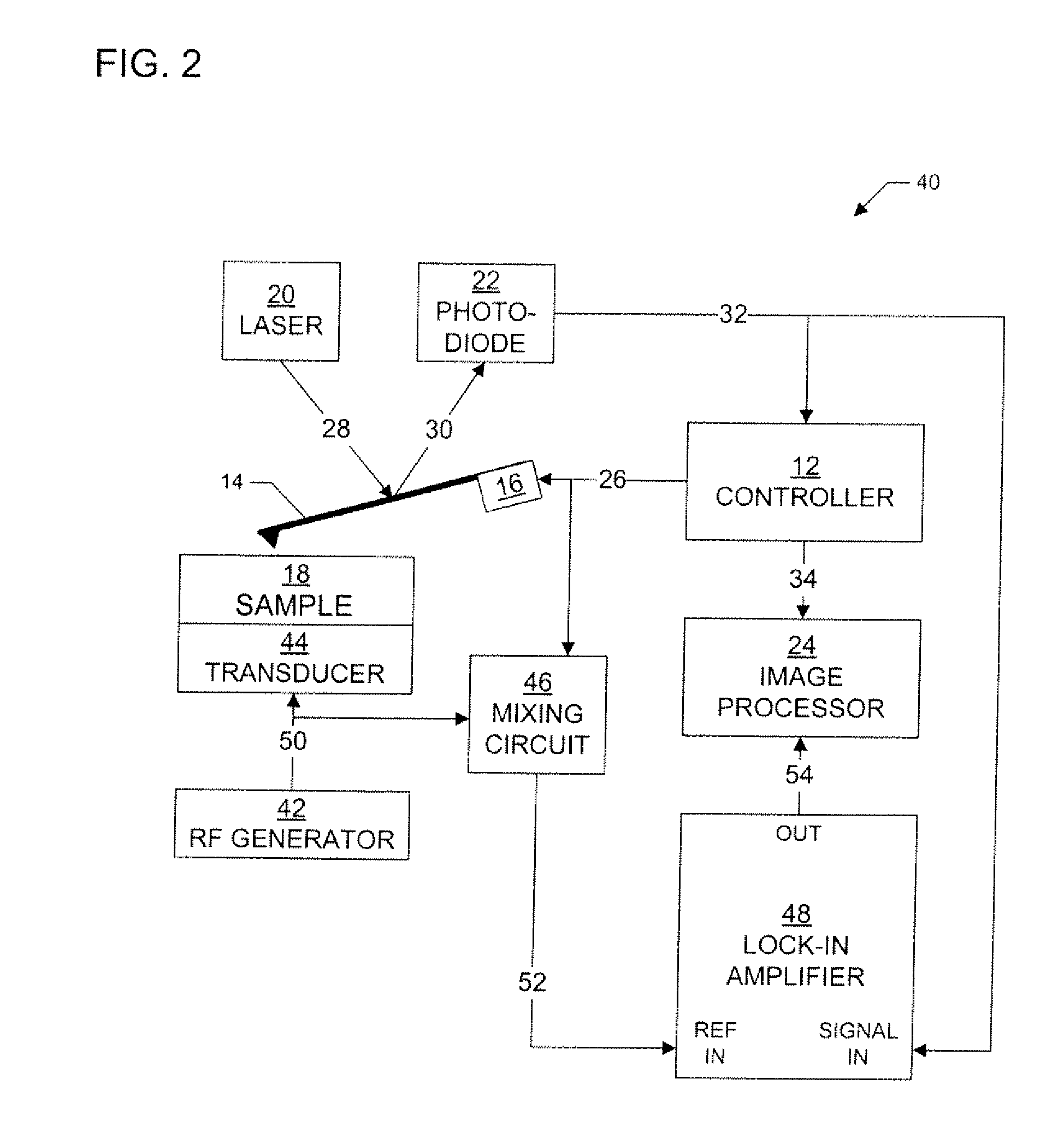Resonant Difference-Frequency Atomic Force Ultrasonic Microscope
a technology of atomic force and ultrasonic microscope, which is applied in the field of scanning probe microscopy, can solve the problems of insufficient methods for assessing deeper (subsurface) features at the nanoscal
- Summary
- Abstract
- Description
- Claims
- Application Information
AI Technical Summary
Benefits of technology
Problems solved by technology
Method used
Image
Examples
Embodiment Construction
[0015]The present invention will now be described more fully hereinafter with reference to the accompanying drawings, in which preferred embodiments of the invention are shown. This invention may, however, be embodied in many different forms and should not be construed as limited to the embodiments set forth herein; rather, these embodiments are provided so that this disclosure will be thorough and complete, and will fully convey the scope of the invention to those skilled in the art. Like numbers refer to like elements throughout.
[0016]Resonant difference-frequency atomic force ultrasonic microscopy (RDF-AFUM) of embodiments of the invention employs an ultrasonic wave launched from the bottom of a sample while the cantilever of an atomic force microscope, driven at a frequency differing from the ultrasonic frequency by one of the contact resonance frequencies of the cantilever, engages the sample top surface. At high drive amplitudes of the ultrasonic wave or cantilever (or both), ...
PUM
 Login to View More
Login to View More Abstract
Description
Claims
Application Information
 Login to View More
Login to View More - R&D
- Intellectual Property
- Life Sciences
- Materials
- Tech Scout
- Unparalleled Data Quality
- Higher Quality Content
- 60% Fewer Hallucinations
Browse by: Latest US Patents, China's latest patents, Technical Efficacy Thesaurus, Application Domain, Technology Topic, Popular Technical Reports.
© 2025 PatSnap. All rights reserved.Legal|Privacy policy|Modern Slavery Act Transparency Statement|Sitemap|About US| Contact US: help@patsnap.com



